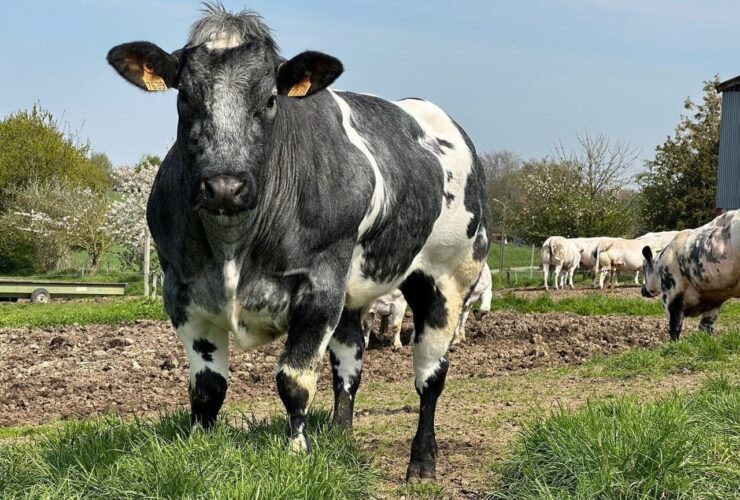Grass fed vs Grain fed steaks: a complete comparison
Steak is a beloved staple in many diets around the world, and the choice between grass-fed and grain-fed beef has become a hot topic among food enthusiasts, nutritionists, and environmentally-conscious consumers. When it comes to these two types of beef, the differences go beyond just taste and texture. In this article, we will explore the key aspects of grass-fed and grain-fed steaks, focusing on two essential elements: flavor and nutrition.
Flavor
1. Grass-Fed Steaks:
Grass-fed steaks are known for their unique flavor profile, which sets them apart from their grain-fed counterparts. Cattle that graze on pasture predominantly consume a diet of grass and other forage plants. This natural diet imparts a distinct earthy and slightly gamy flavor to the meat. Grass-fed beef is often described as having a more robust and complex taste, with hints of herbs and wild vegetation.
The texture of grass-fed steaks is generally leaner due to the lower fat content. While some may appreciate this leaner texture, others might find it less juicy compared to grain-fed steaks. The leaner nature of grass-fed beef means it can be more sensitive to overcooking, so it’s crucial to cook it to the desired level of doneness without overdoing it.
Overall, grass-fed steaks offer a taste that is closely connected to the animal’s natural diet, resulting in a unique and more pronounced beef flavor. This characteristic is appealing to those who prefer a more “earthy” taste in their steak.
2. Grain-Fed Steaks:
Grain-fed steaks, on the other hand, are prized for their milder, buttery flavor and tenderness. Cattle raised in feedlots are primarily fed a diet of grains like corn and soy, which promotes faster weight gain and marbling – the intramuscular fat that gives beef its characteristic tenderness and juiciness.
The marbling in grain-fed steaks not only enhances the meat’s flavor but also contributes to its succulence. As the fat melts during cooking, it infuses the meat with a rich, fatty flavor that many steak enthusiasts prefer. The result is a steak that is often described as more tender and juicy compared to grass-fed varieties.
Due to the higher fat content, grain-fed steaks can be more forgiving when it comes to cooking, as they are less likely to become dry or tough if slightly overcooked.
Nutrition
1. Grass-Fed Steaks:
Grass-fed beef is often hailed as a healthier option due to its nutritional profile. It tends to have lower total fat content and is significantly higher in certain beneficial nutrients such as omega-3 fatty acids, which are essential for heart health. Grass-fed beef also contains higher levels of vitamins like vitamin A and vitamin E, as well as antioxidants like glutathione.
Additionally, grass-fed beef has a more favorable ratio of omega-3 to omega-6 fatty acids, which is believed to reduce inflammation and promote better overall health. This makes it a preferred choice for individuals looking to improve their diet’s nutritional quality.
It’s important to note that grass-fed beef can be leaner, which means it may require slightly different cooking techniques to avoid dryness. Marinating and cooking to medium-rare or medium doneness can help maintain the meat’s tenderness and juiciness.
2. Grain-Fed Steaks:
Grain-fed beef tends to be higher in overall fat content, which can result in a richer flavor but also higher calorie and saturated fat levels. While the marbling in grain-fed steaks contributes to their tenderness, it also adds to the saturated fat content.
Some individuals may prefer the taste and mouthfeel of grain-fed steaks due to their higher fat content. However, this comes with the caveat of increased calorie intake and potential negative health effects associated with excessive saturated fat consumption.
It’s worth mentioning that grain-fed beef can have slightly lower levels of certain nutrients, such as omega-3 fatty acids, when compared to grass-fed beef.
Nutrition
In conclusion, the choice between grass-fed and grain-fed steaks ultimately comes down to personal preferences and dietary considerations. Grass-fed steaks offer a unique, earthy flavor and a more favorable nutritional profile with lower fat and higher levels of beneficial nutrients. On the other hand, grain-fed steaks are prized for their tenderness, rich flavor, and marbling, but they come with higher fat and calorie content. When making your decision, consider both flavor and nutrition to select the steak that best suits your taste and dietary goals. Regardless of your choice, savoring a well-cooked steak can be a delightful culinary experience.




